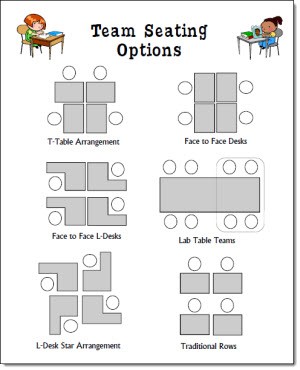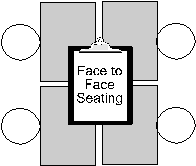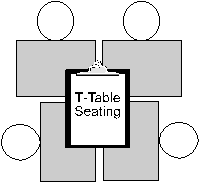 If you’re new to using Cooperative Learning strategies, you might wonder how to seat your students so they are able to interact with each other without losing focus during direct instruction.
If you’re new to using Cooperative Learning strategies, you might wonder how to seat your students so they are able to interact with each other without losing focus during direct instruction.
There are many possible options, but one thing to consider is whether you want them to sit together all day long or just for certain activities.
I described a few of my favorite options below, and you can see several more in the Seating Options PDF on this page.
When I put my kids in teams, they sit together all the time. I am lucky enough to have flat-topped desks that I pull together to make a small table. Teachers who have the L-shaped desks put their kids together, too, but they have to leave a little gap between the chairs to allow the kids to get in and out.
If you have desks with slanted tops, sometimes you may want to have the kids move to a space on the floor when working on activities that require a flat space. Below I have tried to draw 2 of the arrangements I have used.


I prefer what I call the T-Table arrangement shown on the right above and in the photo below. With this arrangement, no one has his or her back to the front of the room and they don’t have eye-to-eye contact with each as they do in the face-to-face seating arrangement.

When students are doing individual work, I have them put up “barriers.” These can be pieces of folded cardboard or just their 3-ring binder notebooks. We’ve also found that 2 file folders placed end-to-end and laminated together make a nice barrier.
Some teachers leave their kids in rows at first but just seat the kids in each team close together. When they do a cooperative activity they have the kids pull their desks together for a short time or have the 2 kids in front turn around and use the 2 desks behind them. When they get more comfortable with CL, they let the kids sit together all the time.

The options I described above refer only to your students physical seating arrangements. For more information about how to decide which students should be on each team, read my post, How to Form Cooperative Learning Teams.